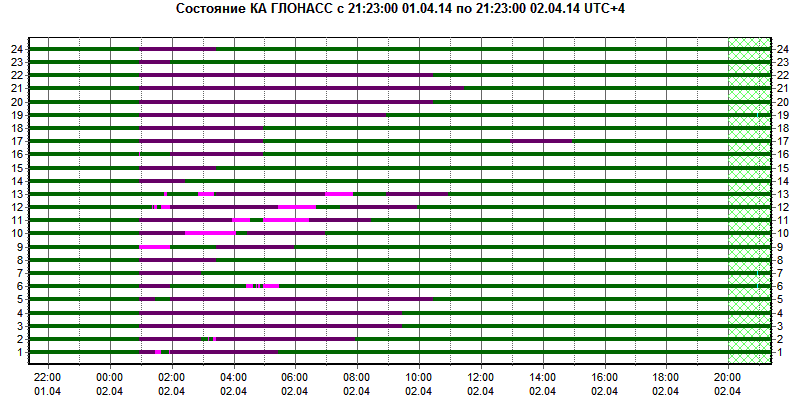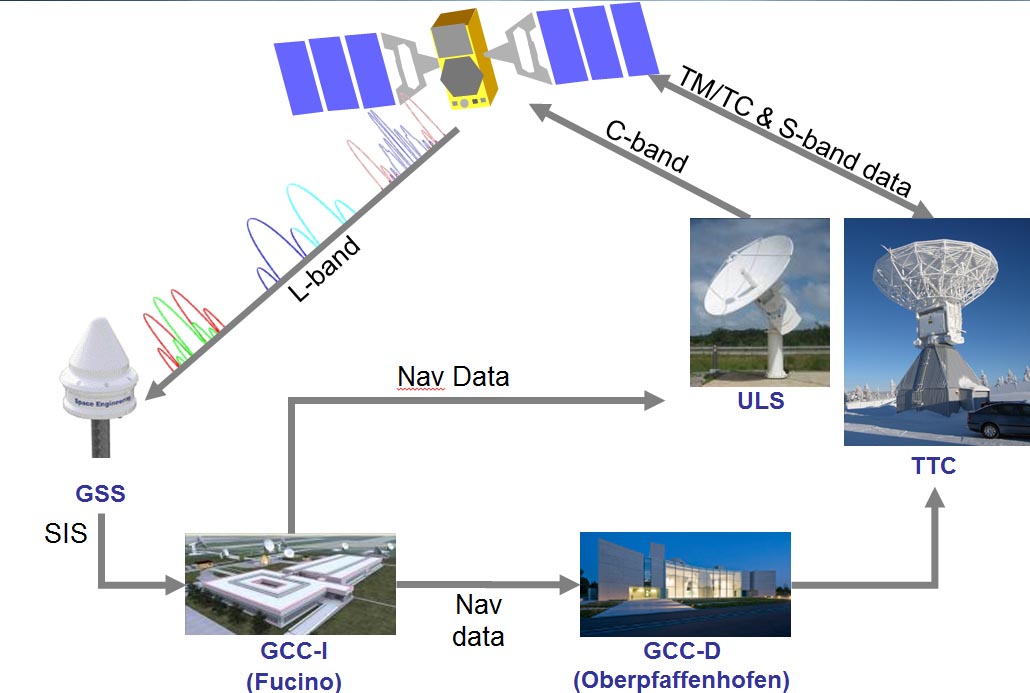The Air Force is defending the new GPS ground system, taking a stand against naysayers in Congress and declaring through its actions an intent to stick with the Next Generation Operational Control System program (OCX) — at least for now.
The most public of these actions occurred June 30 when Secretary of the Air Force Deborah Lee James announced OCX would surpass by at least 25 percent the program’s estimated cost. She declared a critical Nunn-McCurdy breach, putting the program on a path to automatic cancellation.
The Air Force is defending the new GPS ground system, taking a stand against naysayers in Congress and declaring through its actions an intent to stick with the Next Generation Operational Control System program (OCX) — at least for now.
The most public of these actions occurred June 30 when Secretary of the Air Force Deborah Lee James announced OCX would surpass by at least 25 percent the program’s estimated cost. She declared a critical Nunn-McCurdy breach, putting the program on a path to automatic cancellation.
Secretary of Defense Ashton Carter has until no later than October 13 — that is 60 days from when the DoD submitted the Selected Annual Report on the OCX program — to recertify the importance of OCX and explain how the Department of Defense (DoD) is going to fix the program’s underlying budget control problems or the program will be terminated.
Although dire on its face, the declaration appears to be less about dumping OCX than dealing head on with the political hurdles facing an over-budget program in the congressional crosshairs. Senate appropriators, for example, moved earlier this year to kill OCX Blocks 1 and 2, truncating the program at a point where its ability to support the new GPS III satellites is questionable.
“It’s a critical system. It would be very disruptive to stop where we are and start all over,” Frank Kendall, undersecretary of defense for acquisition, technology and logistics said July 10 ahead of the Farnborough International Airshow in Hampshire, England, according to Defense News.
Evidence for DoD’s support for OCX came the same day as the declaration of the Nunn-McCurdy breach when defense officials filed a request with Congress to add $39.3 million to the OCX budget to keep it from running out of money.
The request is part of a $2.6 billion package of changes that would move monies between a 61-page list of over- and under-funded federal programs — changes that must be approved in advance by lawmakers. In addition to boosting funding for OCX, the request seeks to cut $31.7 million from the GPS III program, funding that DoD said was not needed this fiscal year because of program delays.
If approved, the money would increase fiscal year 2016 (FY16) spending on OCX by more than 11 percent, a significant vote in favor of continuing with OCX and its prime contractor Raytheon Company.
“They [DoD] requested the reprogramming because they want the work to continue,” asserted an industry watcher, who spoke on condition of anonymity. “If they did not want the program to continue, they would not have asked to move the money.”
Sources familiar with both the GPS program specifically and with defense spending in general, say Pentagon officials must get the reprogrammed money moved quickly to avoid a temporary shutdown.
Failure to win approval for the transfer will, by DoD’s estimate, cost the Air Force an extra $90 million to reopen the program and an additional four-month delay. The question is, can they get approval in time?
Money Crunch
Although the FY17 funding and authorizing bills for the Department of Defense have yet to be approved, there is no reason to believe, at this point in an election year, that DoD will not get new monies on October 1 — even if the funding comes through a continuing resolution or another omnibus spending bill. So, the money would be needed to cover the end of this fiscal year on September 30.
Sources indicated that the OCX program was still operating as of mid-July.
One knowledgeable source told Inside GNSS that spending on OCX has averaged $1 million a day. If the average daily spending level holds true, then the $39 million would cover all of September and some of August — suggesting the monies would be needed as soon as the fourth week of August.
It is not clear, however, that the spending levels will hold steady. In fact, DoD says program costs are rising due to a need for more staffing.
In the its request, the Pentagon told Congress that the reprogrammed “funds are required to complete a 24-month re-plan and Block 1 test to address deficiencies uncovered during Configuration Item Qualification Testing of the Next Generation GPS Operational Control Segment (OCX).
The 24-month re-plan requires the contractor to increase staffing by 25 percent, resulting in additional cost to the Federal government.” The reprogramming request, which is unclassified and will eventually be made fully public, was posted by Inside Defense.
The $39 million won’t go as far if daily spending jumps — suggesting a shutdown in September. Although it seems counter-intuitive, that actually could be a blessing for OCX. As of press time Congress was headed out of town until after Labor Day (September 5) and appeared in no hurry to deal with the reprogramming plan while they were gone.
“The committee is in the process of analyzing the request,” said a spokesman for the House Armed Services Committee. There was no specific timeline for its response, he said.
If OCX can continue working until Congress returns, it may stand a better chance of uninterrupted operations.
Getting a Thumbs Up
Congress as a whole need not be on hand for approval. The go-ahead comes from just eight key players — the chairs of the House and Senate Armed Services Committees and the Appropriations Committees as well as each committee’s top Democrats, that is, their minority members.
“This does not go to a full committee vote, but you have to get a communication back from the chair of Armed Services and the chair of Appropriations, in both houses, saying “Yep. You can go ahead,” said Gordon Adams, the founder of the Center for Strategic and Budgetary Assessments (CSBA) and a defense budget expert who spent five years as associate director for national security programs at the Office of Management and Budget.
Unlike legislation, the reprogramming package also need not be approved in its entirety. This reduces the chances that the OCX funding will be held up by an objection to one of the many other reprogramming requests. On the other hand it lowers the political cost of someone objecting to the new OCX monies.
“It’s like a line-item veto,” said Todd Harrison, a senior fellow and the director of defense budget analysis at the Center for Strategic and International Studies. “They can object to a single (funding) movement within the reprogramming request and allow all the rest to go through. That’s fairly often that you’ll see that happening.”
An objection would come in the form of a letter and, in the case of Sen. John McCain, R-Arizona, who has been quite vocal about his unhappiness with OCX, possibly a press release as well.
“In the grand scheme of things $39 million is not that much money in the defense budget. It really isn’t,” said Harrison. “But that $39 million in this particular fiscal year could be really important to a program like OCX. It could also be really important to members of Congress who are not happy with progress on that program.”
Into the Breach
The way DoD handled announcement of the breach underscores that OCX — and by extension the funding boost — is indeed important to DoD.
Whereas June 30 was, by law, the last day DOD could submit its reprogramming request, announcing the breach that day — the Thursday evening before the July 4th holiday — appears to be more of a strategic choice.
Notice of the breach was sent out after people had left for the day, and many were on the road to area beaches, a classic Washington maneuver all but guaranteed to blunt the reporting of bad news. That choice also may have limited the opportunity for congressional opponents, including McCain, to use the announcement as political ammunition. Many lawmakers were on their way home to campaign for re-election, and McCain was getting ready to greet troops on the ground in Afghanistan during the Monday holiday.
As it happens, declaring the breach on June 30 also means Carter’s certification will be submitted while Congress is still in recess.
“They definitely buried the news. There’s no question. This stuff does not have to be released on schedule,” said Adams. “They’ve got a program to defend, but they don’t necessarily want high visibility for it.”
Acknowledging the breach when they did also avoided a potentially drawn-out battle between DoD and Congress. When the Senate approved the Defense Authorization bill, it voted to withhold OCX funds unless the magnitude of the budget overruns was formally recognized with a Nunn-McCurdy declaration. The June 30 move, before the House and Senate had time to agree to final language for the legislation, took the issue off the table.
James took the opportunity to begin making the case for the program, pointing out that Raytheon has not received any fees on the OCX contract since August 2013.
“About $64.8 million in fee remains available on contract,” she said in the statement. “All remaining fee opportunity is being restructured to be earned only upon delivery of Block 0 and Block 1.”
She also began laying out the reasons for the cost over runs.
“Factors that led to the critical Nunn-McCurdy breach include inadequate systems engineering at program inception, Block 0 software with high defect rates and Block 1 designs requiring significant rework,” she said in her statement. “Additionally, the complexity of cybersecurity requirements on OCX and impact of those requirements on the development caused multiple delays.
“The corrective actions to resolve these problems took much longer than anticipated to implement.”
Diving Deep
Fortunately, those reviewing the program for Carter will have a lot of raw material from which to develop the certification and the required plan to bring costs in line. The program has been under detailed quarterly review since December when Kendall held a critical “Deep Dive” analysis and approved a two-year extension.
The most recent Deep Dive review took place July 7 before Kendall and James with the support of Lt. Gen. Samuel Greaves, Space and Missile Systems Center commander and Air Force program executive officer for Space. They concluded, the Air Force said in a statement, that Raytheon had “made progress” in implementing critical changes including increasing automation in software development, platform deployment, and improving their software approach.
Kendall told reporters at Farnborough, however, that the results of the review were, in fact, a bit more muddled.
“To be blunt, it’s a mixed bag. I’m seeing some evidence of progress, but I’m still seeing some problems,” he said, according to Defense News. “I think Raytheon is putting additional resources into the program and I do see some signs of improvement. We also have had a couple of hiccups, I’ll say.”
The cryptic reprogramming request also raises questions
Although sources agreed that any shutdown would cost the Pentagon extra money and time, it is not clear from the request why what would likely be no more than a six-week break would result in up to four months’ delay and a cost increase of some $90 million dollars — an amount roughly equal to a quarter of the entire FY16 funding package for the program.
The nature of the 24-month re-plan referred in the request is also unclear. In December, Kendall decided to expend the program by two years. It is not clear if the 24-month re-plan is part of that two years or, as the name suggests, a preparation period for the two years.
Raytheon referred questions to the Air Force, which declined to respond saying officials are “not in a position to discuss specifics in the omnibus, or any other pending reprogrammings, until we have responses from all four defense committees.”
Decisions
Perhaps what DOD is really be trying to do is buy enough time to make a fully informed decision on its next step with OCX—something it is not prepared to do this fiscal year.
The June 30 breach announcement said the Nunn-McCurdy process “is expected to conclude by October of this year.” Defense News reported Kendall as saying DoD planned to announce in October whether the Air Force would rework the program and apply a new cost baseline or terminate it.
The biggest immediate challenge to that decision making process may come from Capitol Hill whose actions, including proposed funding cuts, Kendall said, could seriously damage any hopes of getting OCX back on track.
“My biggest concern right now is some of the things Congress is doing to the program would make it impossible to execute successfully; so, we’re going to be having conversations with the relevant committees,” he said, according to Defense News.
The risk of Congress curtailing DoD’s options, however, dropped significantly July 14 when Senate Democrats blocked a procedural vote and effectively shut down the defense appropriations process until after Labor Day when Congress returns to Washington.
That greatly increases the chances lawmakers will have to pass a short-term funding bill, called a continuing resolution or CR. CRs generally continue funding across the board at the same level as the previous year or the current President’s Budget as marked, whichever is lower.
"The result is OCX faces an enormous challenge under a CR of being limited by both the SASC [Senate Armed Services Committee] and SAC-D [Senate Appropriations Commitee – Defense] marks to the program," according to a spokesman at the U.S. Air Force Space & Missile Systems Center.
With the Nunn-McCurdy issue now also off the appropriators’ table, Kendall, James, and Carter will have more time to decide how to proceed. The Air Force has said it believes OCX is its best option, and Kendall has made clear he wants a shot at making the program work.
“I believe it is still possible for Raytheon to deliver this product, and I want them to do that,” he said at Farnborough. “If we take steps that would preclude that possibility, that’s not helpful.”






